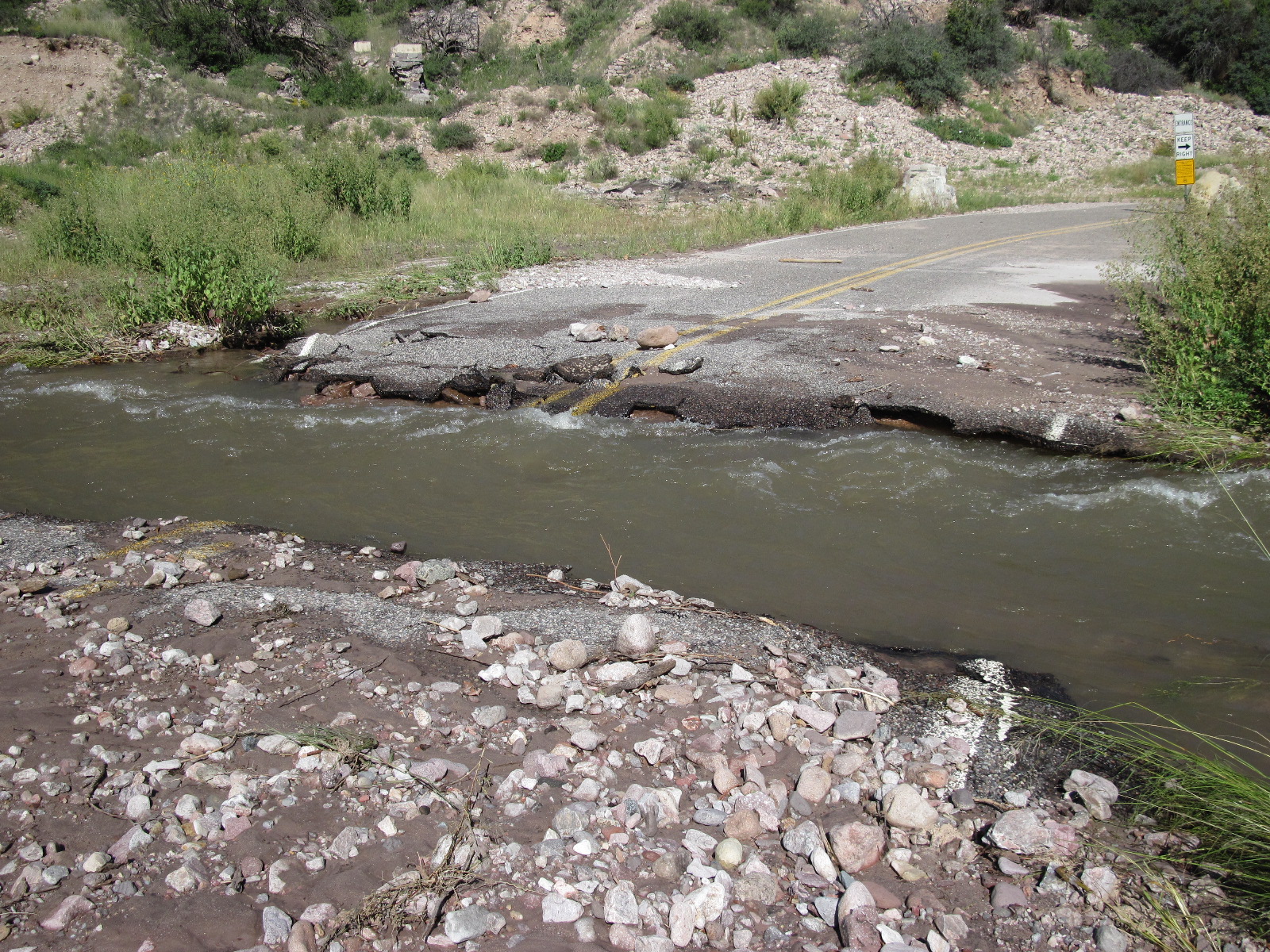How does post-fire flooding affect infrastructure?
Submitted by ecourtri on April 3, 2017 - 6:53pm
In burned landscapes, roads and their associated structures are exposed to altered and more variable conditions that can increase the likelihood of infrastructure failure. In many situations, roads designed for unburned conditions cannot accommodate increases in runoff, sediment, or debris following a fire. Threats to roads and structures such as culverts and bridges, include large cut-and-fill failures. Debris that collects at culverts can obstruct runoff passage beneath the road and lead to road failure. Roads and bridges can become washed out by large flows and these transportation corridors can be especially important to access burned landscapes in the emergency response. Other infrastructure, like irrigation networks and hydroelectric facilities can also be impacted by post-fire flooding and erosion. Flows with altered water chemistry can corrode structures and intakes may become clogged with ash or sediment. With large sediment deposition, the capacity of reservoirs generally diminishes and irrigation needs may not be met.
Post-fire flooding causes road wash out after the Whitewater Baldy Fire.







